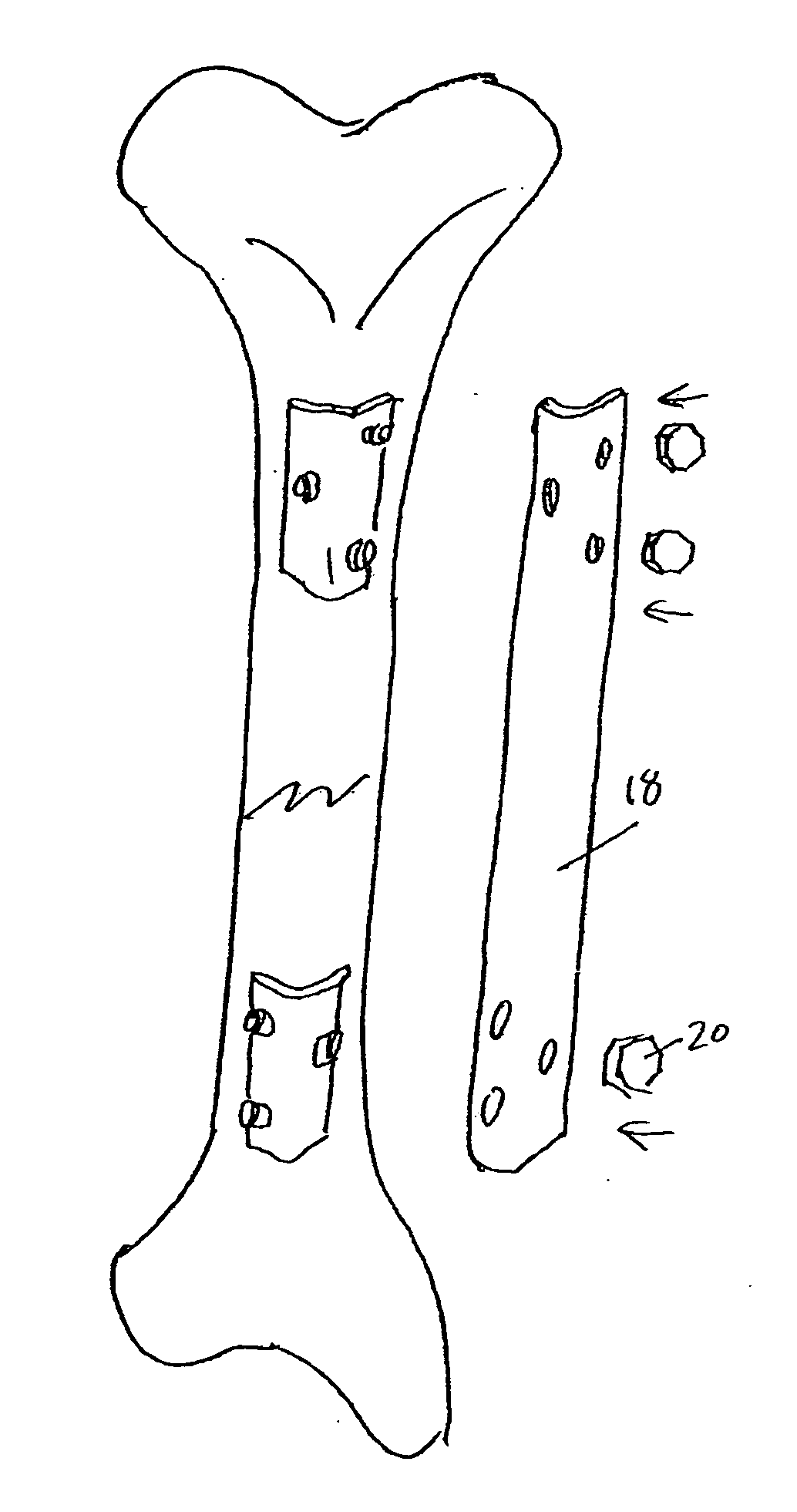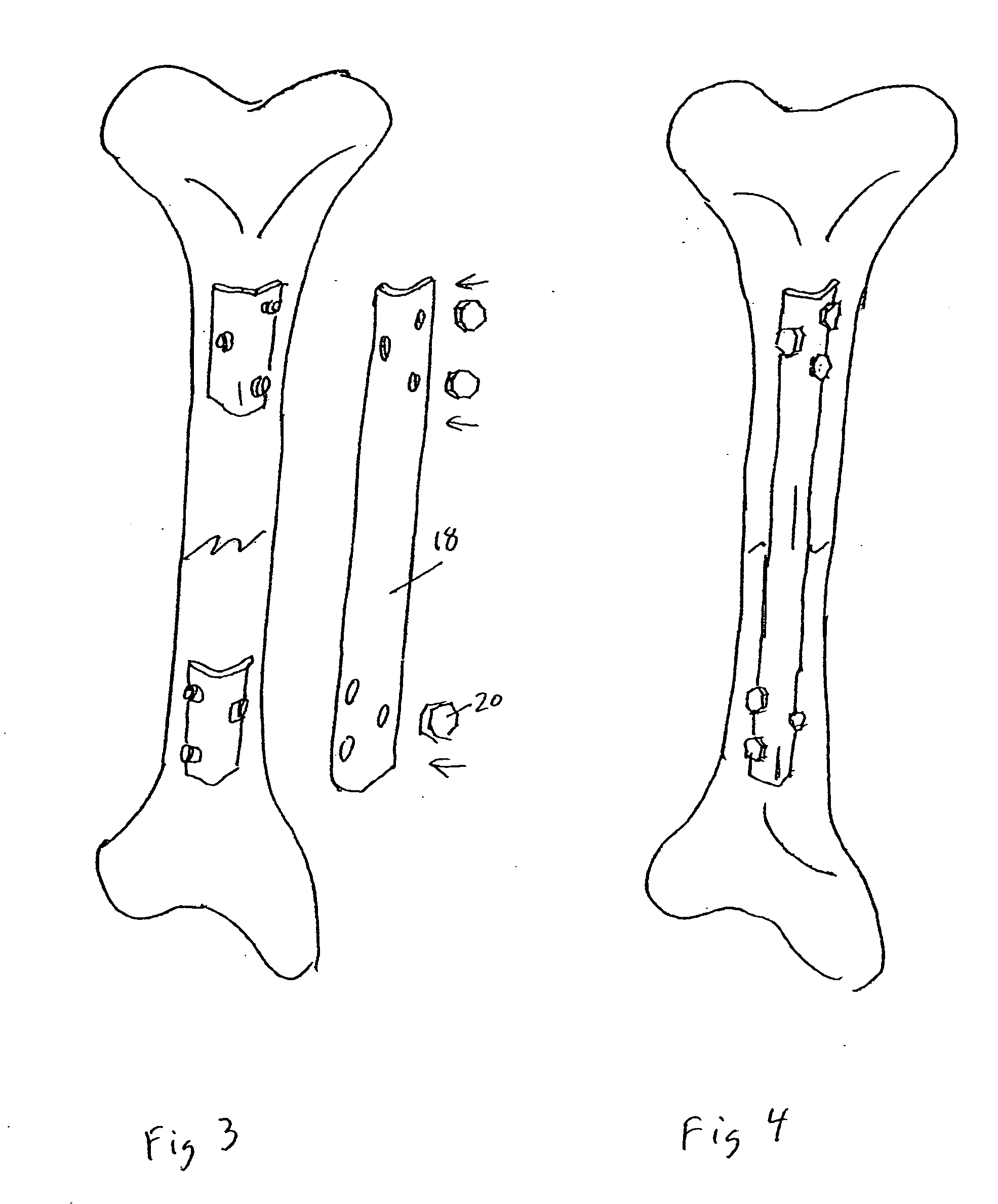Lateral implant system and apparatus for reduction and reconstruction
a technology of lateral implants and implants, applied in the field of lateral implant systems, can solve the problems of splinting fractured bones, exacerbated familiar problems, and strong and often eccentric forces, and achieve the effect of enhancing healing and quick return to function
- Summary
- Abstract
- Description
- Claims
- Application Information
AI Technical Summary
Benefits of technology
Problems solved by technology
Method used
Image
Examples
Embodiment Construction
[0078] The following description of the preferred embodiment(s) is merely exemplary in nature and is in no way intended to limit the invention, its application, or uses.
[0079] Long Bone Fixation
[0080] Referring to the figures where like reference numbers indicate like elements, a long bone such as tibia 10 presenting with a fracture 8 depicted in FIG. 1. Also depicted are basal implants 14, described in greater detail below. They have the common characteristic of having a base plate and a perpendicular rod. In installation, the orthopedic surgeon would cut T-shaped slots 12 in the bone. Advantageously, multiple slots at each anchor site may be cut and oriented such that the basal implants will insert and mount at various angles.
[0081] As depicted in FIG. 2, the basal implants are inserted into the slots 12 and a top of a post of the basal implant extends beyond the surface of the bone and outwards to receive further hardware. The implants may optionally be secured with screws as ...
PUM
 Login to View More
Login to View More Abstract
Description
Claims
Application Information
 Login to View More
Login to View More - R&D
- Intellectual Property
- Life Sciences
- Materials
- Tech Scout
- Unparalleled Data Quality
- Higher Quality Content
- 60% Fewer Hallucinations
Browse by: Latest US Patents, China's latest patents, Technical Efficacy Thesaurus, Application Domain, Technology Topic, Popular Technical Reports.
© 2025 PatSnap. All rights reserved.Legal|Privacy policy|Modern Slavery Act Transparency Statement|Sitemap|About US| Contact US: help@patsnap.com



